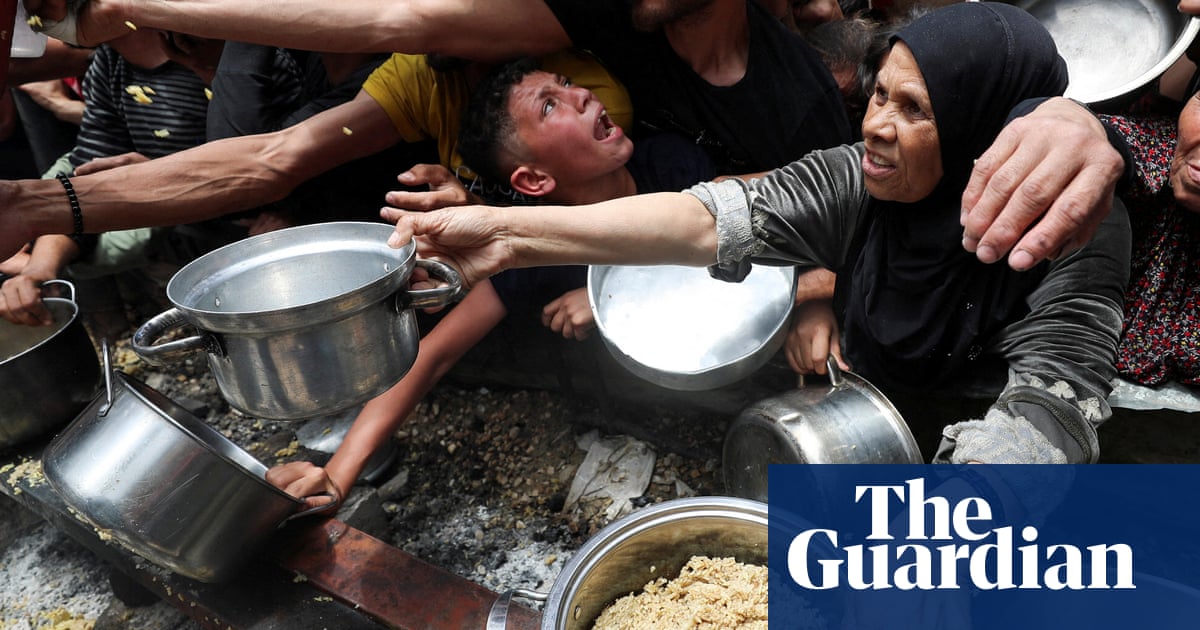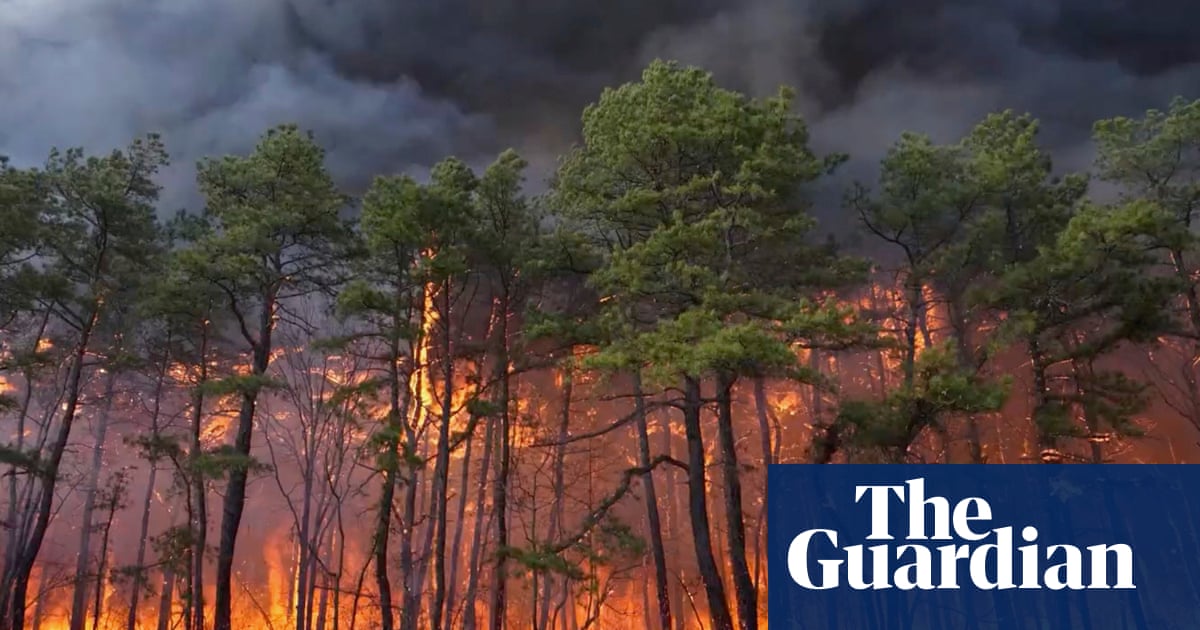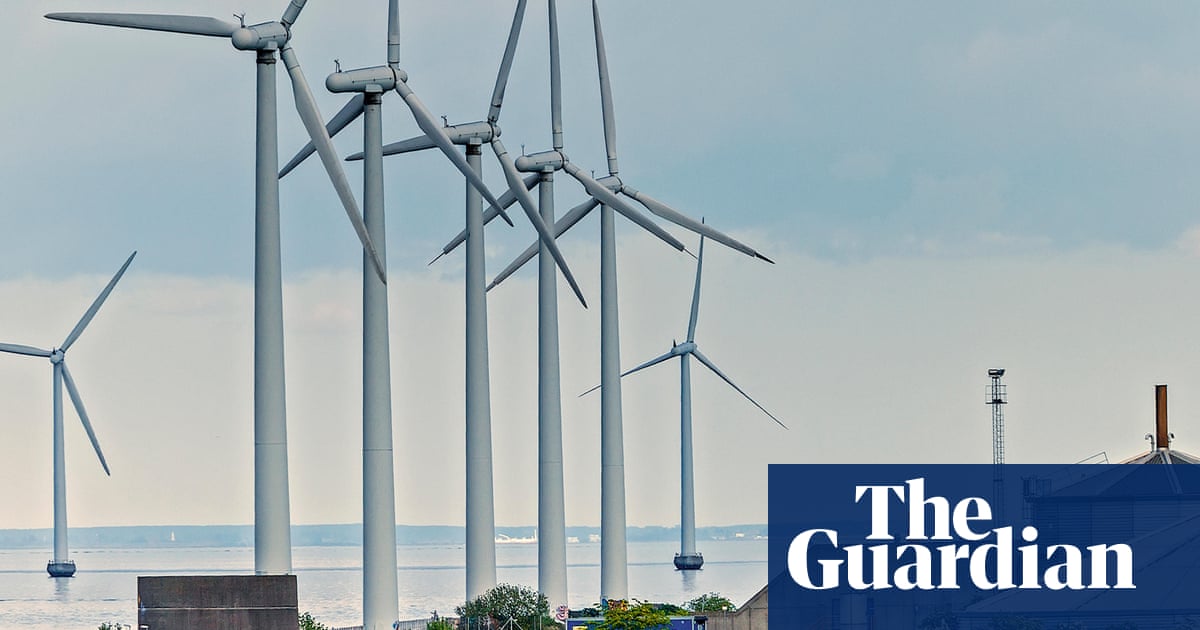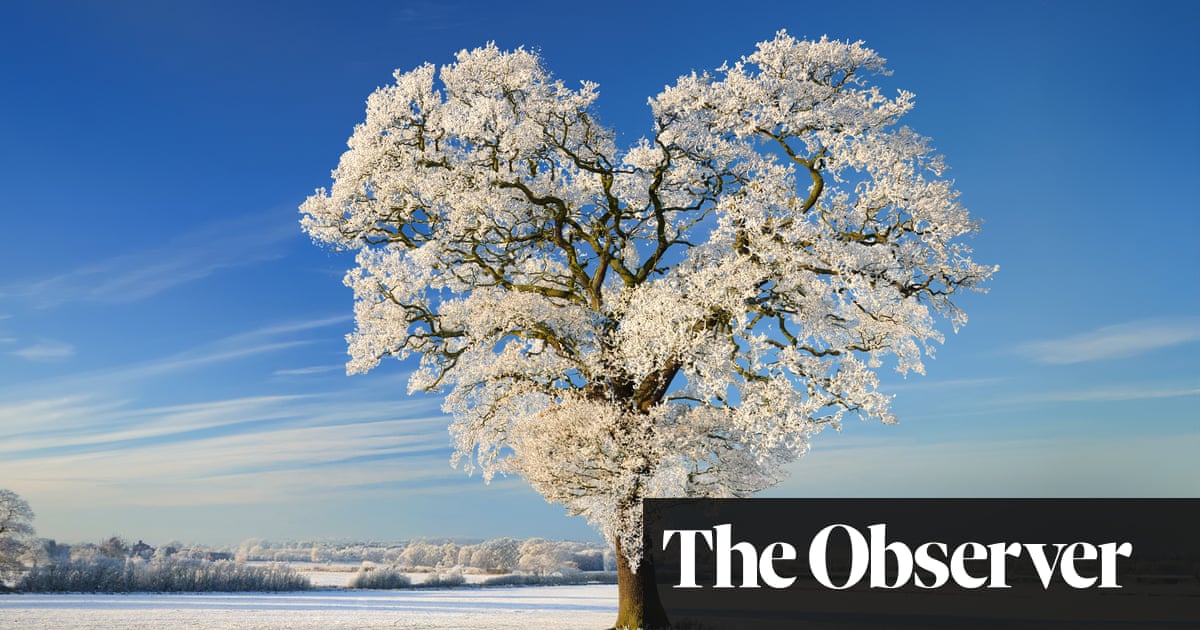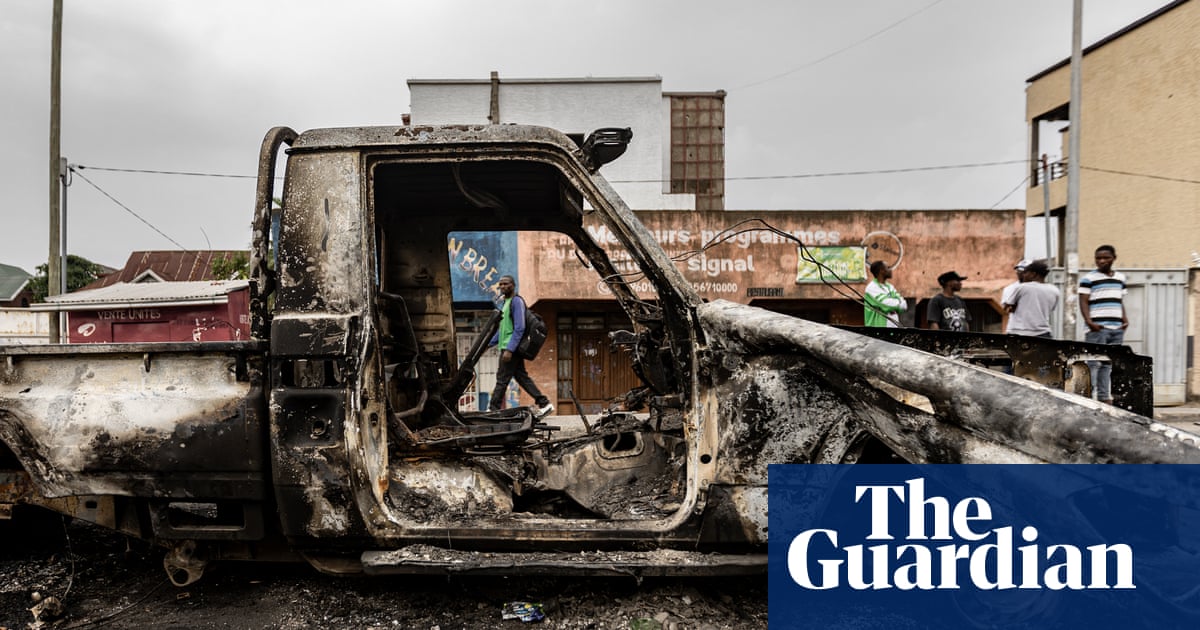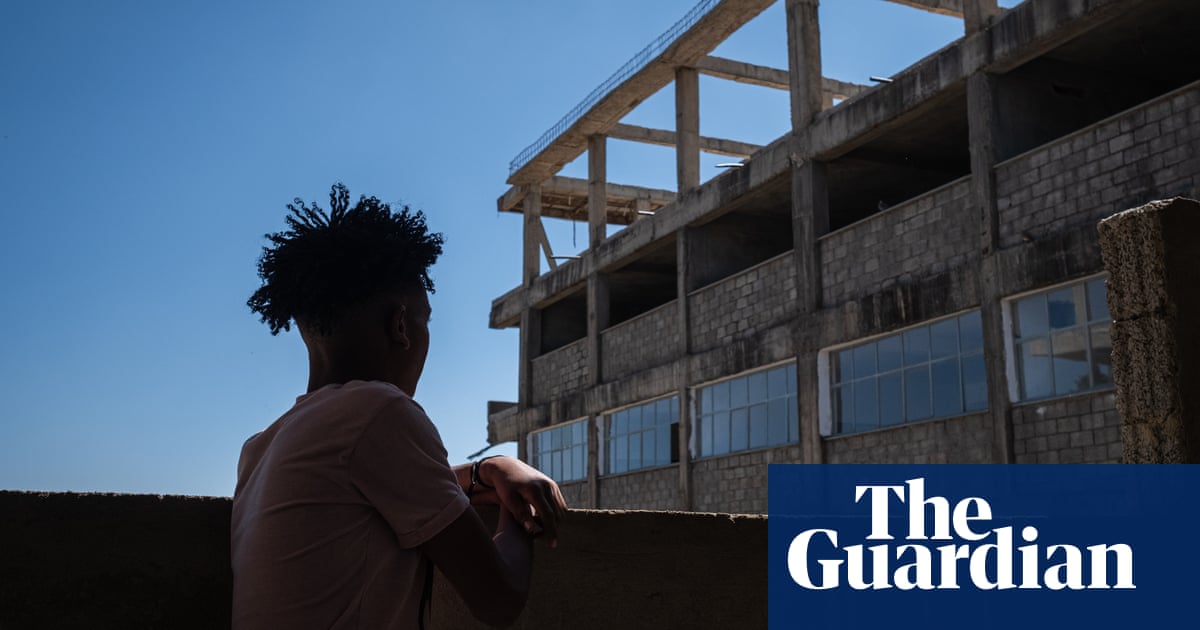At first there was no answer on the satellite phone. But on the third call, Donald Meeseetawageesic heard his sister’s voice. “We need somebody to come and tow us out,” he told her.
It was a warmer-than-normal night in early March and Meeseetawageesic, the elected band councillor for Eabametoong First Nation, was stranded in a 4x4 truck on the dark winter road leading to his community. The tyres were stuck in the deep snow and the temperature outside was below freezing. Help was about 60km (37 miles) away.
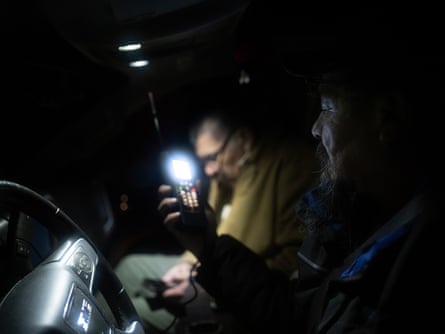
Made entirely of snow and ice, the winter road forms a vital route connecting Eabametoong in northern Ontario to cities farther south. It has 24 snow bridges spanning creeks, and a daunting 5.5-km crossing over a frozen lake. But warmer winters are making the route unpredictable: the snow bridges are weakening and the lake ice is thinning.
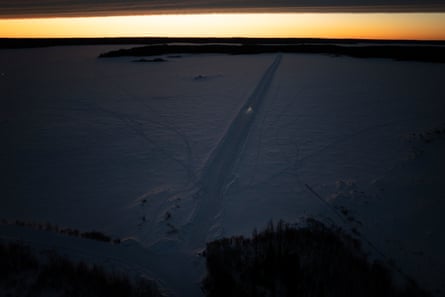
In past decades, temperatures have been cold enough in March for a firm road surface. But this year, a mild winter has softened the snowy road, and as Meeseetawageesic and his brother drove along the road, their truck got stuck in the snow.
More than 50 Indigenous communities – with a total population of 56,000 people – depend on about 6,000km of winter roads.

With no all-season roads connecting them to the nearest cities, small planes are the communities’ only lifeline for most of the year. But in winter, lakes and rivers freeze, allowing the construction of a vast network of ice roads.
Indigenous communities in Canada’s north rely on such routes to truck in supplies such as lumber for housing, fuel, bulk food and bottled water, which are too bulky and expensive to fly in by plane. For Eabametoong, construction materials are crucial as the community is facing a housing crisis, with up to 14 people living in a single home.

Last year was the hottest year since record-keeping began, bringing deadly wildfires, heatwaves, floods and rising sea levels. In Canada’s north, rising temperatures are threatening a way of life, as the winter road season grows shorter every year. Last year, chiefs declared a state of emergency after the roads failed to freeze on time. This March, rain temporarily closed the winter road to Eabametoong and four other communities.
“We’re getting a shorter window for sure,” said Meeseetawageesic, who oversees housing in Eabametoong. Trucks used to bring materials by winter road in January, but warm temperatures are forcing them to wait until March; the winter road typically melts in April.
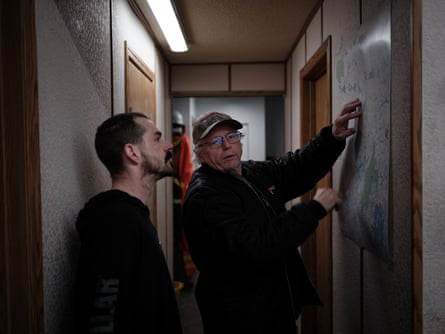
While they waited on the winter road, Meeseetawageesic and his brother chopped down wood and built a fire. Hours passed, and then suddenly headlights lit up the road. A passing trucker offered to take them toward Eabametoong. He drove them over the bumpy road until they encountered the rescue party – Meeseetawageesic’s sister and her friends in two trucks. They drove the brothers the rest of the way, arriving home at 4am.
****

Days later, a blizzard was blowing through Eabametoong. But inside Isabel Boyce’s home, a wood stove kept things toasty.
Boyce sat on her living room couch. Across the room lay a mattress on the floor, where a baby slept soundly as other children ran around. Seven people live in the two-bedroom home.
“It’s my own family, so I don’t consider myself overcrowded,” Boyce said, explaining that other homes have several families under one roof. Homes are in short supply – and pervasive mould is eating away at the housing stock, including Boyce’s previous home. “We had to move out because it was getting all mouldy [and] rotting.”

People in First Nations communities are four times more likely to live in crowded housing and six times more likely to live in housing in need of major repairs than non-Indigenous people, according to Canada’s 2021 census. To close the housing gap, more than 55,000 units need to be built, a report by the Assembly of First Nations found.
Canada’s historical policies reduced the land base of Indigenous communities to only 0.2% of their original territories, making it nearly impossible to generate revenue from their lands. They rely heavily on federal transfer payments, and the government holds the purse strings for basic infrastructure, including water treatment plants, schools and housing.
Now, more funding is needed – not only for housing materials but also to safely and reliably transport them into Eabametoong. “They should build an all-season road,” Boyce said. “It would benefit the community in the future.”

Meeseetawageesic sits in his elderly mother’s living room, speaking to her in Ojibwe. “She has noticed a change on the winter roads. The ice is not freezing as it should. January and February are supposed to be our coldest months, but it’s not as cold as it was before,” he said, translating her words.
After separating from his wife, he now lives in his mother’s home. Although he makes decisions about housing for the community of about 1,600 people, there is nowhere else for him to live. The housing committee has received 180 housing applications from families and individuals.

The winter roads crisis is putting pressure on Eabametoong in other ways, too.
In January 2024, the community lost its only school to a fire. There was no functioning fire truck, and although new fire trucks were scheduled to arrive, warm temperatures prevented them from being transported by winter road. The community built a temporary school for the children, who missed months of education.

When the winter road is unavailable for hauling essential supplies, the community must bring them in by air – at a much higher cost.
Like other remote First Nations, Eabametoong relies on diesel fuel that used to be trucked over the winter road. “We fly all the fuel in now, and probably for the last four years, five years, because of the ice conditions,” said the Eabametoong chief, Solomon Atlookan.
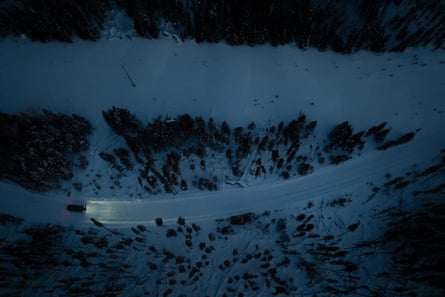
The costs of flying fuel into remote First Nations are soaring. Ontario First Nations collectively move about 20m litres of fuel each year by winter road, according to Indigenous Services Canada emails obtained through public records request. “It costs approximately $0.69/litre more to mobilise by air – potentially resulting in a pressure of $13.8m [per year in Ontario] should winter roads not be available,” an ISC employee wrote in one email. The records show that ISC is aware that long-term planning is needed to address fuel supply issues “due to winter roads trending to open later in the year”.
Ultimately, many First Nations will need all-season roads. But they cannot afford to build the roads themselves. “‘Emergency’ doesn’t even feel strong enough [to describe the situation],” said the ISC minister, Patty Hajdu. “It’s so urgent that we do more together to figure out what this next stage of living with climate change looks like for, in particular, remote communities.”
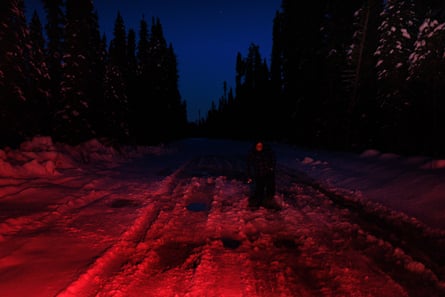
Climate adaptation would look different for each community, Hadju said: some First Nations wanted permanent roads while others were contemplating using airships to bring in heavy loads. The cost of building roads would probably be covered by cost-sharing between different levels of government, and, she said, the federal government was ready to commit funding “in theory”.
“For each community, there are many steps to get the federal government’s commitment on any particular cost-shared project. Obviously, we would want to make sure that we’re working in partnership with the province, in partnership with the First Nations,” Hajdu said.

Eabametoong has completed a feasibility study for an all-season road. Chief Atlookan is concerned about the impacts on the community – he knows the road could bring tourism, which could threaten traditional ways of life. But climate change and higher costs are forcing him to seriously consider an all-season road. “We need to begin working on it now,” he said.
First Nations are not the only communities anticipating the end of winter roads.
Pickle Lake, the most northern town in Ontario accessible by all-season road, is a hub for truckers to refuel before driving north on the winter roads to First Nations. At the bulk fuel supplier Morgan Fuels, semi-truck drivers streamed through the doors in search of coffee and a bathroom.

Andy Rae was charging his radio before driving a truck full of groceries to Wunnumin First Nation. He pointed to a spot on a map where his truck slid off the winter road and smashed through a frozen creek last year. “We didn’t know the creek was there. Nobody did. I found it,” he joked.
Another time, Rae drove a heavy truck across a lake with dangerously thin ice that popped and cracked under his wheels. “They didn’t tell me how thick the lake was until after,” he said. Repeating advice he had received from an older trucker, he said: “As long as you’re popping and cracking, you’re good. If it’s dead silent, you’re going through.”

Behind the front desk sat the site supervisor, Brent Beever, who has worked at Morgan Fuels since the 1980s and watched climate change wreak havoc on the winter roads. “With the warming conditions, that’s your biggest challenge,” he said.
Beever explained that temperatures used to drop well below freezing at this time of year, but now he sees rain and above-freezing temperatures in February and March. Warmer conditions mean rougher roads, collapsing snow bridges, and more truck maintenance. “It makes it hard on equipment going in there, and it’s challenging for the drivers to get into the communities,” he said.
“I guess that’s why they’re more and more working toward all-season roads. How long that will be, I don’t know. It’ll be probably a few years.”
This story was supported by the Pulitzer Center

 1 month ago
27
1 month ago
27






